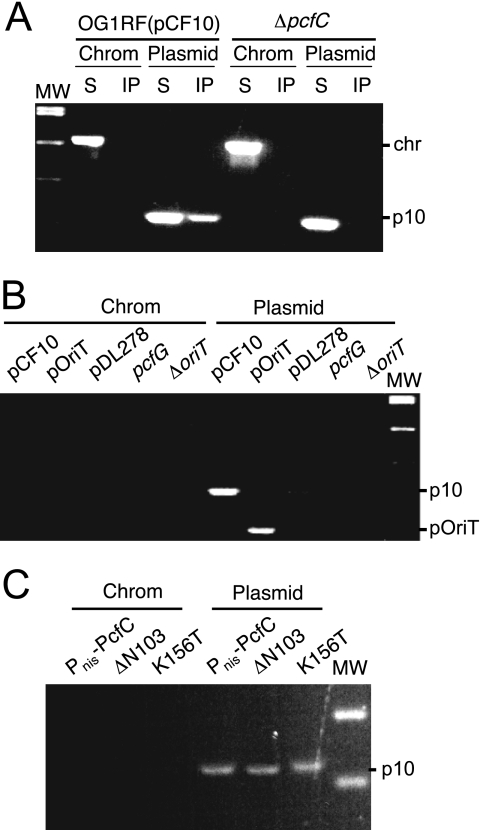FIG. 4.
Detection of the PcfC-pCF10 interaction in vivo by use of the TrIP assay. (A) Detection of pCF10 or chromosomal DNA in immunoprecipitates recovered from FA-treated OG1RF(pCF10) or the isogenic ΔpcfC mutant cell extracts with anti-PcfC antibodies. PCR amplification products were generated with primers against a pCF10 gene fragment (listed as plasmid [top] or p10 [right]) or a chromosomal fragment (Chrom [top] or chr [right]). MW, molecular mass markers. PCR products were generated using supernatant (nonprecipitated) (S) and immunoprecipitated (IP) material. (B) Detection of PCR-amplified pCF10 or PoriT (plasmid [top] or p10 or pOriT [right]) or chromosomal (Chrom) DNA in immunoprecipitates recovered from FA-treated OG1RF carrying the plasmids listed. (C) Detection of PCR-amplified pCF10 (plasmid [top] or p10 [right]) or chromosomal (Chrom [top]) DNA in immunoprecipitates recovered from FA-treated strains carrying pCF10ΔpcfC and plasmids producing native PcfC, PcfCΔN103, or PcfCK156T from promoter Pnis.

